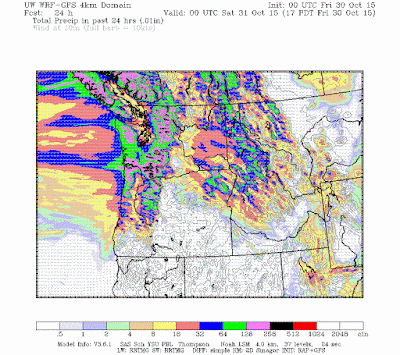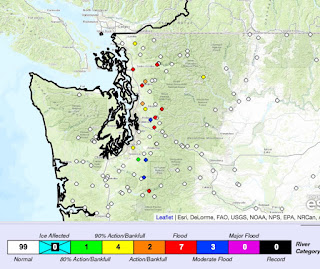The biggest environmental issue of our day is not global
warming but sustainability: how can the
human species reach a long-term, sustainable relationship with our planet? Sustainability is controlled by population, use of resources, the climate of the planet, water resources, and much more.
But clearly, global warming is a very serious part of sustainability, with
our best science indicating that the planet will warm substantially during the
next century as a result of increasing greenhouse gases like CO2. The environmental community and its allies in
the political realm have made global warming their number-one environmental priority.
But clearly the environmental community and the world in general are failing to to deal with global warming.
A fresh approach is needed.
Proof of Failure
The most profound proof is the observed trend in atmospheric CO2 (see below). It is not only rising, but the rate of increase has accelerated, even with all the efforts on renewable energy, energy efficiency, and the like. This is failure.
Driven by increasing population and improving living standards in second/third world countries, the demand for energy is surging, with most of it coming from fossil fuels. Renewables are only providing a sliver of current energy demand, and that will not change soon.
Carbon emissions have flattened in the U.S. and Europe, but rising exponentially in China and very quickly in India. Countries like China and India want to raise the living standards of their citizens and that requires energy, and those of us in the developed world are in no moral position to ask them to refrain from doing so. In fact, rising living standards are crucial tools for population control.
Perhaps the most concentrated source of non-carbon energy is nuclear power, but unfortunately, due to the Fukashima disaster and other issues, nuclear power generation is now declining or taken off the table by several nations, just when needed the most to reduce greenhouse gas concentrations (see graphic).
Renewables (e.g., solar and wind) are growing rapidly, but from a small base (see below). There is no realistic plan at this point for having them take over the bulk of world energy demands during the next few decades. In fact, the U.S. government estimates that renewables might reach about 15% of total world energy consumption in 2040. Not enough to make a real difference.
To seriously reduce the warming effects of greenhouse gases, there needs to be a huge decrease in carbon fuel usage around the world. Estimates by the international IPCC group suggests that to keep the temperature increase to less than 2C by the end of the century, the concentration of CO2 must remain below 450 ppm (parts per million). Considering that current CO2 concentrations are now 400 ppm, there would have to be a large reduction from current emission levels immediately. There is virtually no chance that is going to happen.
But it is even worse than that. Environmentalists have not convinced the general population of the
seriousness of the problem. For
example, a recent Gallup poll found that global warming is not even on the top twenty list of concerns of the U.S. population.
And if you ask Americans what environmental problems worry them, global warming is at the bottom of a list of concerns. They are more worried about rain forests than global warming.

Environmental groups, such as Seattle's Climate Solutions, the National Wildlife Federation, and their media friends, have tried hyping and exaggerating extreme weather events, suggesting that they are at least partly the result of human greenhouse gas emissions. The more desperate such groups get to ensure folks "do the right thing", the more they rev up the hype machine. But as the polling numbers above demonstrate, the scare tactics have not worked. Rather, the obvious exaggeration has undercut environmentalist's credibility. Some environmental groups like to say that the whole problem is the big, bad oil companies that are using their financial muscle to suppress the truth and ensure inaction. But that view is simplistic at best--- the lack of action is far deeper and widespread. It is a societal problem. And environmentalists have had a huge, but ineffective, megaphone that the oil companies lack: the media. Furthermore, a number of environmental groups have undermined their climate message by combining it with fixing other societal problems (racism, economic disparity, etc.). This is a terrible mistake because it weakens their ability to develop a broad coalition to deal with global warming.

And even more worrisome, the issue has become a political liability,
with an entire party (Republicans) dismissing the seriousness of the problem
and need for immediate action. One might
argue that Al Gore has done a great disservice by politicizing a previously far
more bipartisan issue.
Probably did more harm than good
It is clear that mankind is not willing to forgo the
use of economically exploitable fossil fuels.
The search for new sources of oil and gas continue, with the development of
new technologies (e.g., fracking) providing huge new sources of gas and oil
that society has enthusiastically taken advantage of. Gas prices are low, encouraging use.
The bottom line of all this is obvious: mankind is doing very little to stop global warming and there is little hint of any effective action. And embarrassingly, the uber environmentally aware Puget Sound region, is not doing much to deal with the problem. Just a few examples:
- Our fuel-intensive airport is growing rapidly, while our major industry (Boeing) is churning out record numbers of gas-guzzling jets
- Our roads are choked with cars, our traffic situation is one of the worst in the nation, and our bus system is completely inadequate for the demand.
- Our politicians are ineffective in this area, preferring to grandstand about environment issues (kayaking out to the Shell drilling platform, pushing short-term rental bikes, flying off to environmental conferences) rather then dealing with transportation, traffic, land use, and energy use in a meaningful way
Some local politicians are ineffective on environmental issues
So is it surprising that our society has been so ineffective about dealing with global warming?
Few people have thought more about how societies deal with
existential threats than Professor Jared Diamond of UCLA, the author of Collapse and Guns, Germs and Steel. Last
year, after giving a lecture at the University of Washington, I asked him:
“Can you think of a single example when a society took
economically costly and disruptive steps to avoid a future problem that had not
been previously experienced?”
He could not. Musing, I can offer one example: Joseph's warning to Pharaoh above 7 drought years.
There have a large number of international meetings to foster agreements on carbon reduction, like Kyoto, Copenhagen, and soon Paris. But, in general, such gatherings are ineffective and agreed "limits" are often vague and small.
So how do we deal with the global warming problem in a fresh, more effective way?
Global warming can not be considered in isolation from sustainability, population, soil and water resources, and land management. Population is the key issue. If there were only 1 billion folks on the planet, we would not be talking about global warming. But we have many more people, with many nations on or near the edge. Billions of people in developing nations want to live a middle class life style like us, but to do so requires energy and resources. The irony is that the only way to limit population is get folks through the transition to middle-class, as demonstrated in Japan, Korea, the U.S., Australia, and Europe. So can we get everyone into the middle class without catastrophic global warming? That is the question.
So how do we deal with global warming forced by greenhouse gases? I have thought about this a lot. It seems to me we need a fresh approach:
1. Since substantial global warming is certain, we must prepare society for inevitable changes. That means adaptation and making society more resilient. For Washington State, the probably means more storage of water during the spring, since snowpack will be less. Getting folks away from rivers that will flood more often. Fixing the damaged forests of eastern Washington.
2. Global warming is a technological problem and technology is our only hope. New energy sources, better energy storage, ways to remove CO2 from the atmosphere, safe nuclear and new energy technologies that we can't imagine today. But developing these technologies will require substantial investments for research and development on a much larger scale than occurring today. A few days ago, I learned that someone else has concluded the same thing: Bill Gates, one the great technologists and philanthropists of our age. If you want to read his exact words,
read his interview in Atlantic Monthly. Bill Gates gets it. His advise should be considered seriously.

3. Society should use cost effective energy-saving and renewable technologies that are cost effective today, like more efficient appliances, high-mileage and electric cars, smart devices, and better insulation in buildings, better mass transportation, and others. They may not solve the problem, but they will help.
4. Environmentalists have hurt themselves by being fixated on global warming. They, and their political allies, should broaden their view to think about sustainability.
5. Approaches like carbon taxes can be very useful, and we are fortunate to have an initiative (I732) that should be able to secure sufficient signatures for consideration.
As the old saying goes: insanity is doing the same thing over and over again and expecting different results. When it comes to global warming and greenhouse gases, it is time for a different approach.


























































